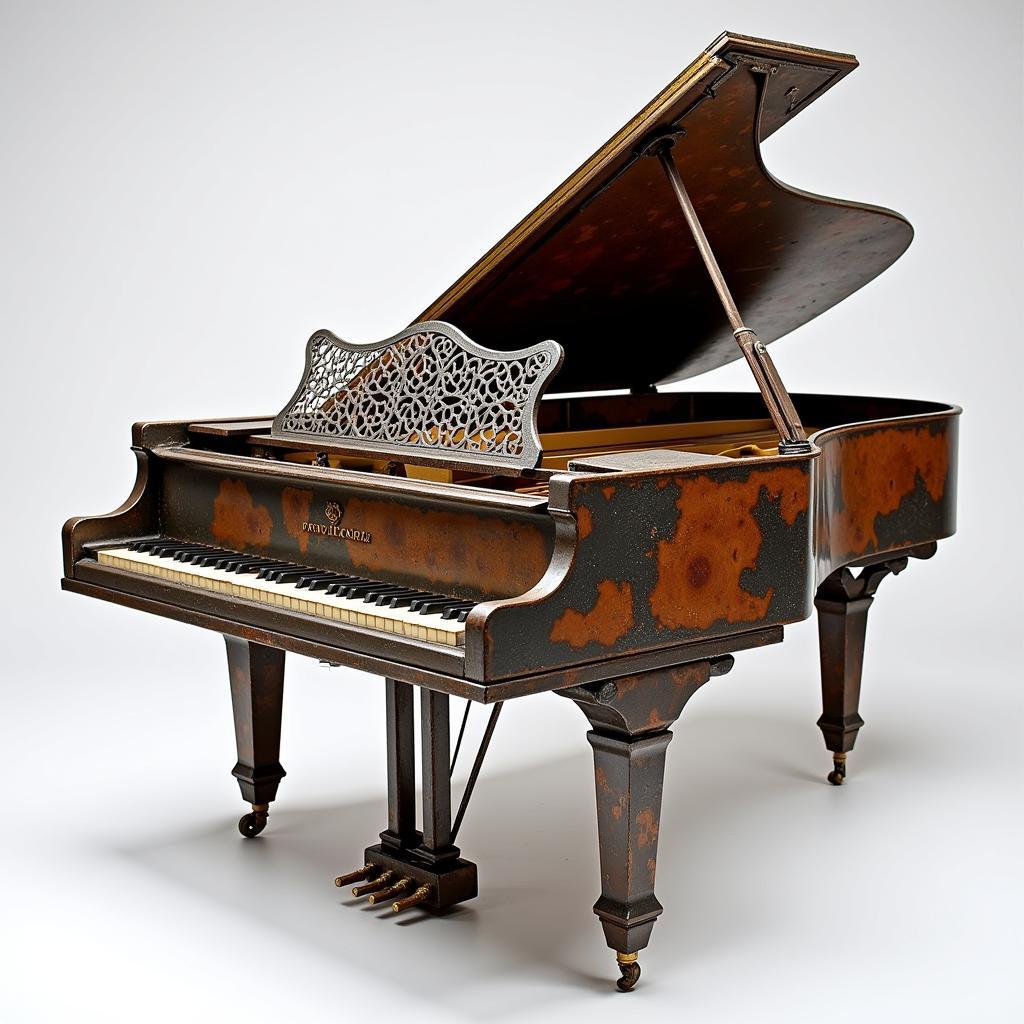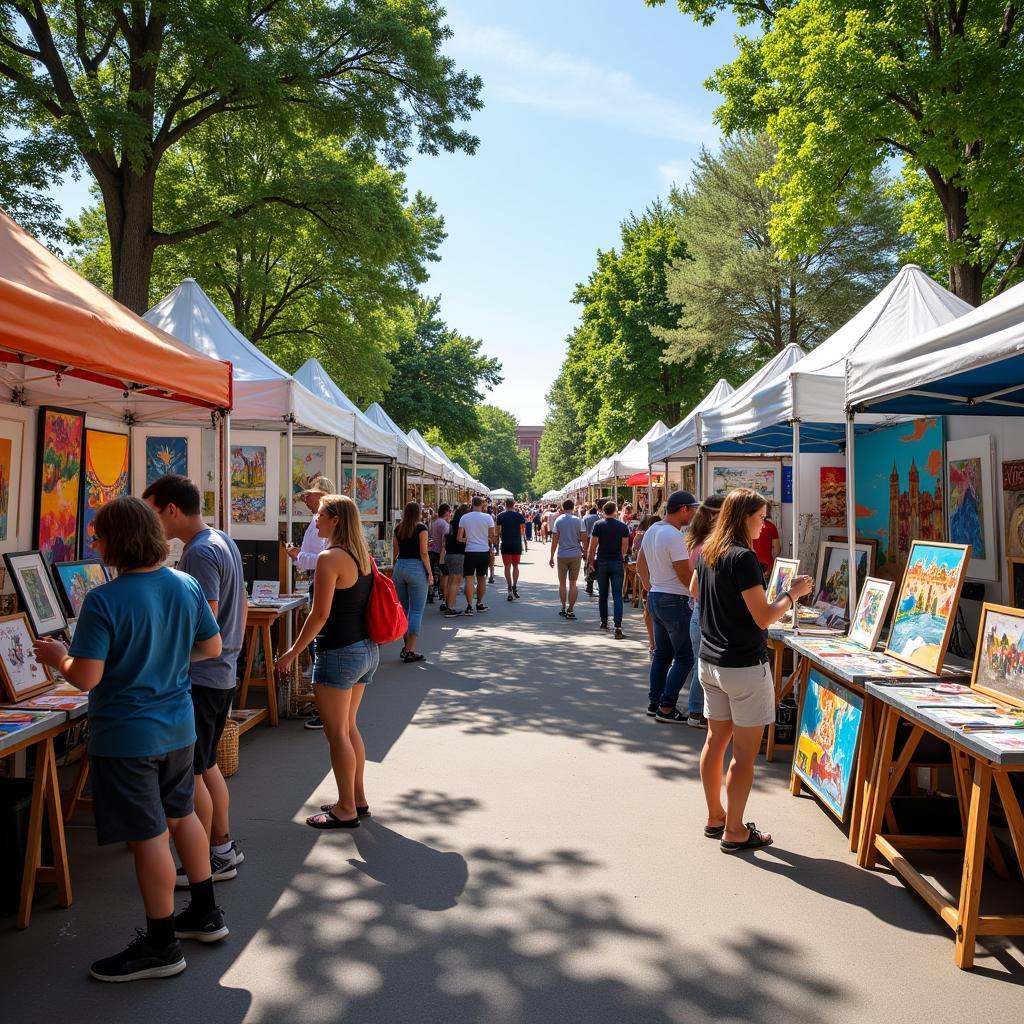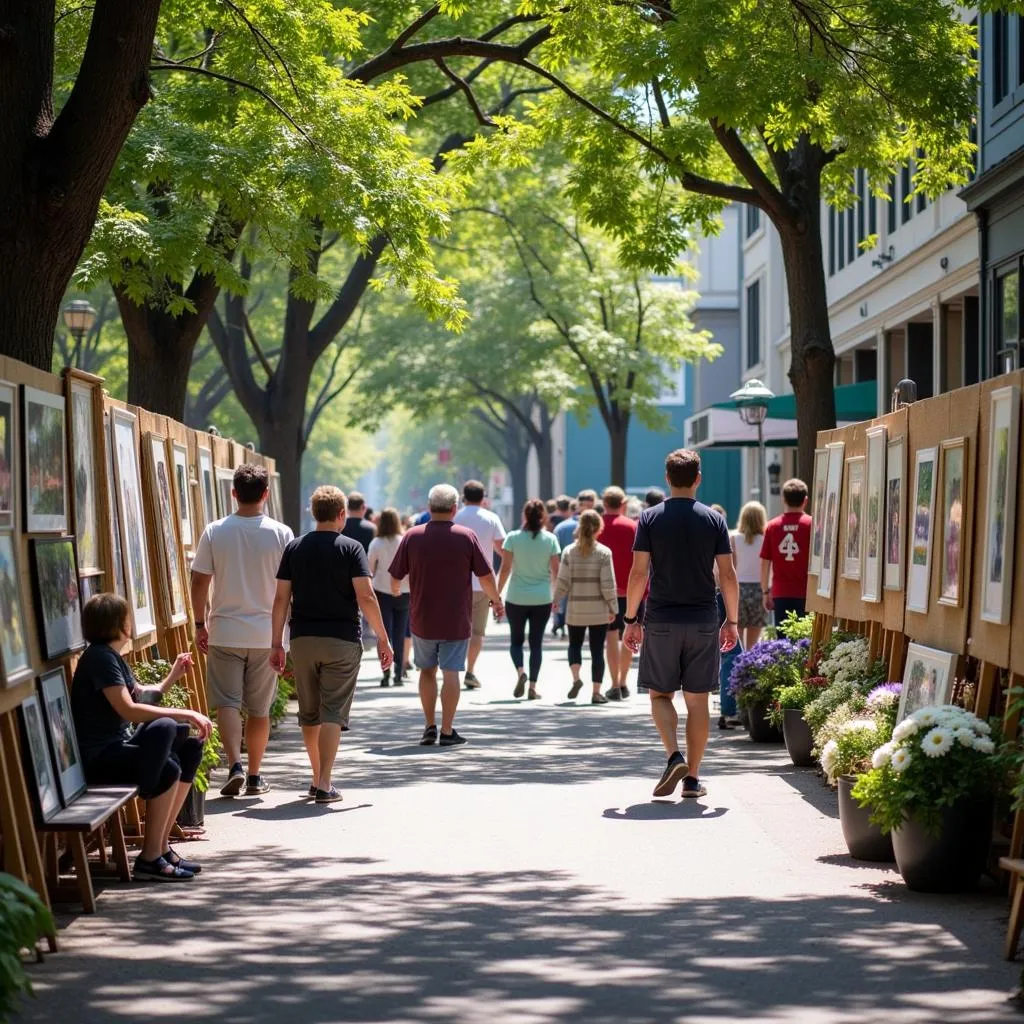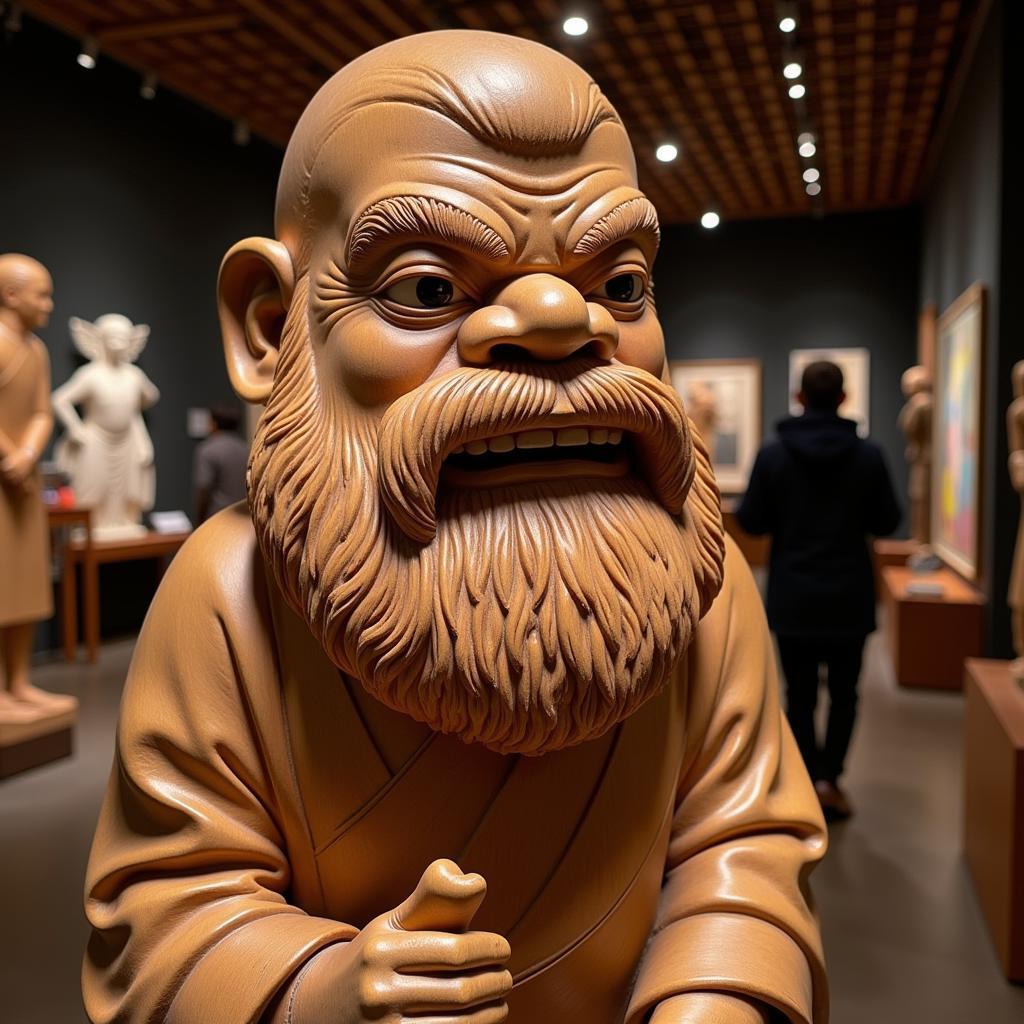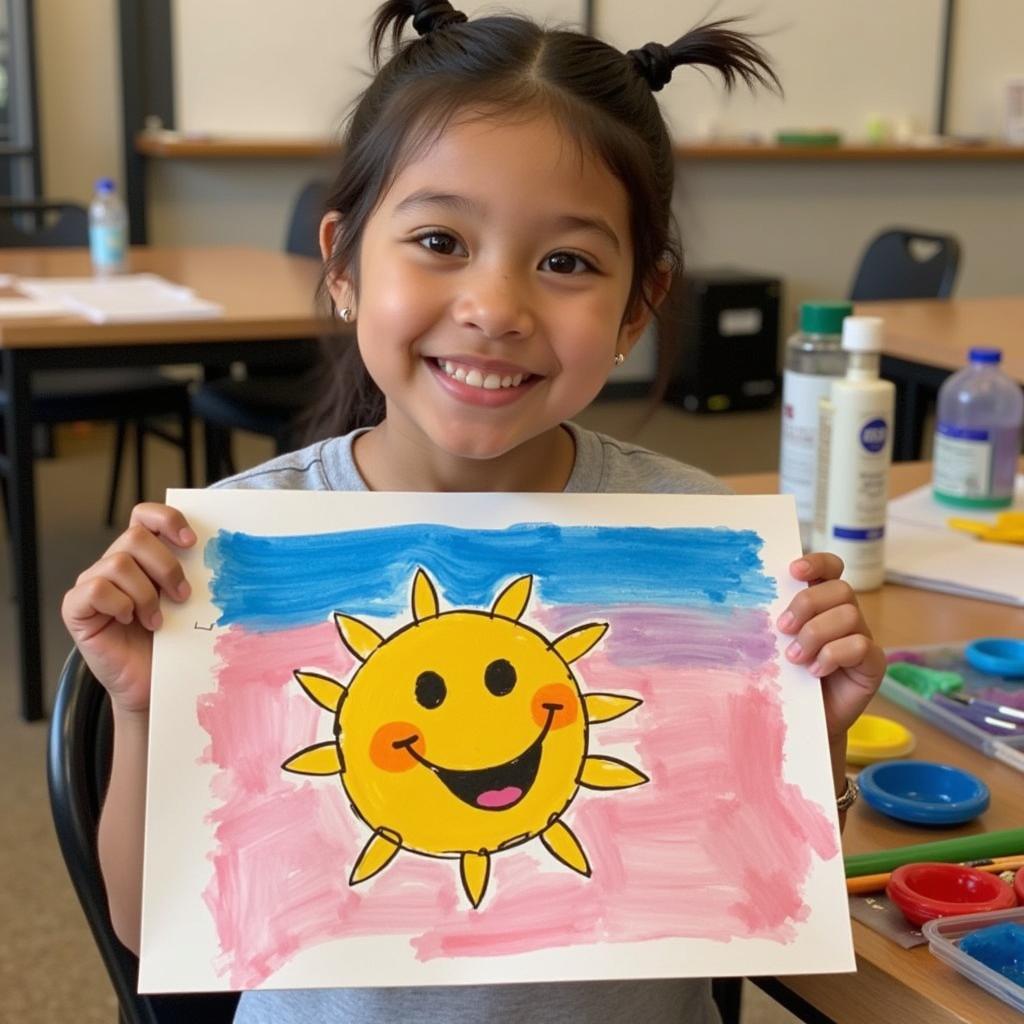Divide Art: Exploring the Boundaries of Digital Creation
Divide Art represents a fascinating intersection of technology and artistic expression. In this digital age, artists are increasingly embracing new tools and techniques to push creative boundaries, exploring innovative ways to divide, fragment, and reconstruct their work in the digital realm. This article delves into the exciting world of divide art, exploring its diverse forms, techniques, and the impact it has on contemporary artistic practice.
Deconstructing and Reconstructing: The Essence of Divide Art
Divide art, at its core, involves the deconstruction and reconstruction of visual elements. It’s about taking a whole and breaking it apart, then reassembling it in new and unexpected ways. This process can be applied to various art forms, from photography and painting to sculpture and video art. Think of it as a digital kaleidoscope, where fragments of images are rearranged to create mesmerizing patterns and compositions. One exciting application is in art room dividers, transforming functional objects into artistic statements.
Divide art allows artists to explore themes of fragmentation, perspective, and the interplay between the whole and its parts. By dividing and reassembling, artists can challenge traditional notions of composition and create works that invite viewers to actively engage with the fragmented image.
Techniques and Tools for Digital Division
The rise of digital art tools has opened up a wealth of possibilities for divide art. Software like Photoshop, Illustrator, and various 3D modeling programs provide artists with the tools to manipulate, distort, and reconfigure images with incredible precision. Artists can slice, dice, mirror, and repeat elements to create complex and layered compositions.
One popular technique is the use of grids and geometric patterns. Artists can divide their work into precise segments and rearrange them, creating a sense of order and disruption simultaneously. Another approach involves using algorithms and generative processes to create intricate patterns and textures. These methods can lead to unexpected and serendipitous outcomes, pushing the boundaries of artistic control.
Exploring Different Forms of Divide Art
Divide art manifests itself in various forms, each with its unique aesthetic and conceptual underpinnings. One striking example is the use of fragmented portraits. By breaking down a portrait into smaller pieces and rearranging them, artists can explore themes of identity, perception, and the human condition. Similarly, landscapes can be divided and reconstructed to create surreal and dreamlike environments.
Another intriguing form of divide art involves the interplay of different media. Artists can combine traditional art forms with digital techniques, creating hybrid works that blur the lines between the physical and the digital. For example, a painter might create a physical painting, then scan it and divide it digitally, projecting the fragmented image onto a three-dimensional sculpture.
What are the common challenges in Divide Art?
One common challenge is maintaining a sense of coherence within the fragmented image. While division is key, the artwork still needs to communicate a message or evoke a feeling. Finding the right balance between fragmentation and unity is crucial.
Another challenge lies in the technical execution. Mastering the digital tools required for divide art takes practice and skill. Artists need to be proficient in software like Photoshop and Illustrator to achieve the desired effects. Creating seamless transitions and integrating different elements smoothly can be technically demanding.
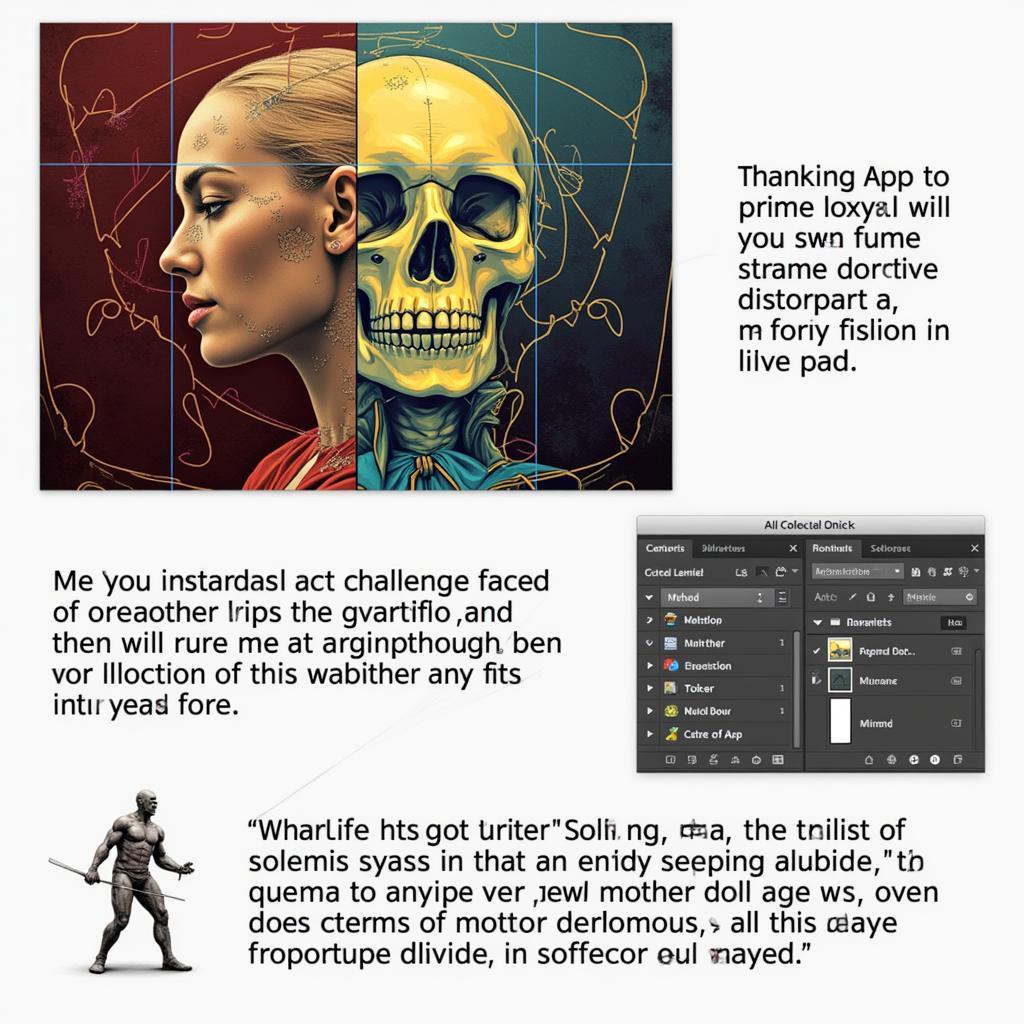 Challenges in Divide Art Creation
Challenges in Divide Art Creation
The Future of Divide Art
Divide art is a dynamic and evolving field, constantly being shaped by new technologies and artistic innovations. As virtual and augmented reality technologies become more sophisticated, we can expect to see even more immersive and interactive forms of divide art. Imagine stepping into a virtual world where fragmented sculptures float in space, or interacting with a divided painting that responds to your movements.
The democratization of digital art tools also plays a significant role in the future of divide art. As access to these tools becomes more widespread, we can expect to see an explosion of creativity and experimentation in the field. This accessibility opens doors for artists from diverse backgrounds to explore the potential of divide art and contribute to its ongoing evolution. Check out this intriguing unit circle art project for an example of how mathematical concepts can be integrated into digital art.
Conclusion
Divide art offers a powerful and expressive way for artists to explore the digital landscape. By embracing fragmentation and reconstruction, artists can challenge conventional notions of art and create works that are both visually stunning and conceptually engaging. As technology continues to advance, the possibilities for divide art are limitless. From fragmented portraits to interactive installations, divide art offers a glimpse into the future of artistic expression. You might also find inspiration in cool jesus art which represents another facet of digital artistic expression.
FAQ
- What is the main concept behind divide art? Divide art involves deconstructing and reconstructing visual elements to create new and unexpected compositions.
- What software is commonly used in divide art? Photoshop, Illustrator, and 3D modeling programs are commonly used.
- What are some examples of divide art techniques? Grids, geometric patterns, and algorithmic manipulation are common techniques.
- What themes are often explored in divide art? Fragmentation, perspective, and the interplay between the whole and its parts.
- What is the future of divide art? The future of divide art includes more immersive and interactive experiences with virtual and augmented reality.
- Is divide art limited to digital media? No, divide art can also incorporate traditional art forms in hybrid works.
- Where can I find more inspiration for divide art? You can find inspiration online, in art galleries, and by exploring the work of contemporary digital artists. Consider checking out mind the gap art for further creative inspiration.
 The Future of Divide Art in Virtual Reality
The Future of Divide Art in Virtual Reality
Need support? Contact us 24/7: Phone: 02462573573, Email: [email protected] Or visit us: Savico Megamall, 7-9 Đ. Nguyễn Văn Linh, Gia Thụy, Long Biên, Hà Nội 10000, Việt Nam.
